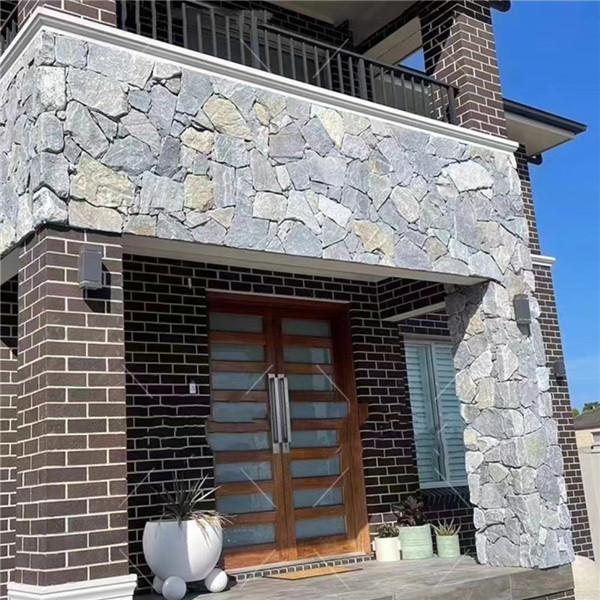Introduction
In recent years, there has been a growing emphasis on sustainable practices in various industries, including construction. As https://www.fs-slate.com/the-benefits-of-stone-veneer/ for environmentally friendly building materials continues to rise, manufacturers and designers are constantly seeking new ways to create products that are both innovative and eco-conscious. One such material that has gained popularity in the construction industry is eco-friendly cultured stone. This article will explore the various aspects of eco-friendly cultured stone, including its composition, benefits, applications, and impact on the environment.
Composition of Eco-friendly Cultured Stone
Eco-friendly cultured stone is a man-made building material designed to mimic the appearance of natural stone. It is typically composed of a blend of cement, aggregates, pigments, and other additives that are mixed together to create a durable and aesthetically pleasing product. One of the key components of eco-friendly cultured stone is cement, which serves as the binding agent that holds the material together. Unlike traditional natural stone, which requires extensive quarrying and processing, eco-friendly cultured stone is manufactured in a controlled environment, making it a more sustainable alternative.
Benefits of Eco-friendly Cultured Stone
There are several benefits to using eco-friendly cultured stone in construction projects. One of the primary advantages is its environmental impact. Unlike natural stone, which requires the extraction of large quantities of raw materials from the earth, eco-friendly cultured stone is manufactured using recycled or sustainable materials. This not only reduces the demand for natural resources but also minimizes the environmental impact associated with quarrying and mining operations.
In addition to its environmental benefits, eco-friendly cultured stone offers several practical advantages for builders and designers. One of the key benefits is its versatility in terms of design and customization. Cultured stone can be manufactured in a wide range of shapes, sizes, and colors, allowing for greater flexibility in design choices. This versatility makes it an ideal choice for a variety of applications, from exterior cladding and facades to interior accent walls and fireplace surrounds.
Another benefit of eco-friendly cultured stone is its durability and low maintenance requirements. Cultured stone is designed to withstand the elements, including extreme weather conditions, UV exposure, and moisture. This makes it an ideal choice for outdoor applications where natural stone may be prone to cracking or fading over time. Additionally, eco-friendly cultured stone is easy to clean and requires minimal maintenance, making it a cost-effective and practical choice for homeowners and builders alike.
Applications of Eco-friendly Cultured Stone
Eco-friendly cultured stone can be used in a wide range of construction applications, both residential and commercial. One common use of cultured stone is as exterior cladding on buildings, where it can provide a natural and rustic aesthetic without the high cost and maintenance requirements of natural stone. Cultured stone can also be used for interior applications, such as accent walls, fireplace surrounds, and kitchen backsplashes, adding a touch of elegance and sophistication to any space.
In addition to its aesthetic appeal, eco-friendly cultured stone is also a popular choice for landscaping and hardscaping projects. Cultured stone can be used to create retaining walls, garden borders, and decorative features in outdoor spaces, adding texture and visual interest to gardens and patios. Cultured stone can also be used to create custom outdoor kitchens, fire pits, and water features, providing a durable and stylish solution for outdoor living areas.

Impact on the Environment
The production of building materials, including natural stone, can have a significant impact on the environment. Quarrying and mining operations can lead to deforestation, habitat destruction, and soil erosion, as well as the depletion of natural resources. In contrast, the manufacturing process for eco-friendly cultured stone is designed to minimize environmental impact and reduce waste.
One of the key ways that eco-friendly cultured stone reduces its environmental footprint is through the use of recycled materials. Many manufacturers use recycled aggregates and pigments in the production of cultured stone, reducing the demand for virgin materials and diverting waste from landfills. Additionally, the manufacturing process for cultured stone is designed to be energy-efficient, with many manufacturers using renewable energy sources to power their operations.
Furthermore, eco-friendly cultured stone can help to reduce carbon emissions associated with construction projects. By using a sustainable alternative to natural stone, builders and designers can lower the carbon footprint of their projects and contribute to a more environmentally friendly building industry. In addition, the durability and longevity of cultured stone can help to reduce the need for frequent replacements and renovations, further reducing the environmental impact of construction projects.
Conclusion
Eco-friendly cultured stone is a sustainable building material that offers a range of benefits for builders, designers, and the environment. With its versatile design options, durability, and low maintenance requirements, cultured stone is an ideal choice for a wide range of construction applications. By choosing eco-friendly cultured stone over traditional natural stone, builders and designers can reduce their environmental impact, lower their carbon footprint, and create more sustainable and resilient buildings for the future. As the demand for sustainable building materials continues to grow, eco-friendly cultured stone is poised to play a key role in shaping the future of the construction industry.
